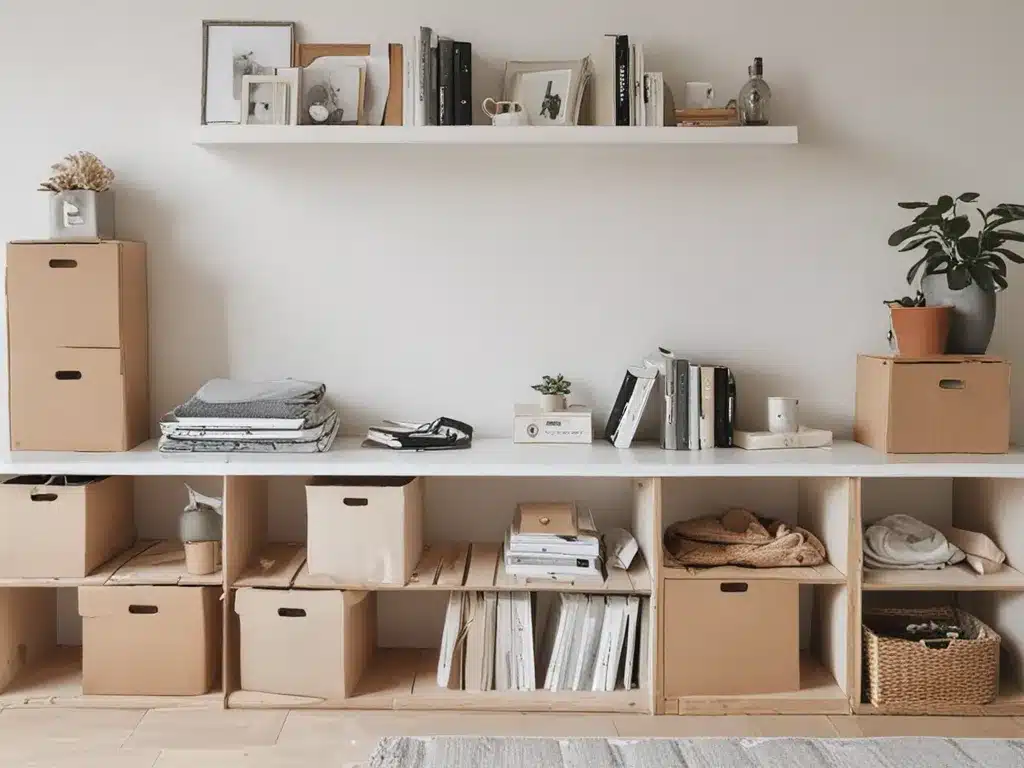Why Declutter?
Decluttering your home can provide a number of benefits:
-
Reduced stress and anxiety. Cluttered spaces can feel overwhelming and chaotic. Decluttering helps create calmer surroundings that promote a sense of control and wellbeing.
-
Increased productivity. Having a tidy, organized home makes it easier to find things and reduces time wasted looking for misplaced items. This allows you to focus your energy on what’s important.
-
More space. Getting rid of excess stuff frees up room in your cabinets, closets, surfaces, and shelves. This creates a lighter, more open feel.
-
Environmental benefits. Decluttering curbs overconsumption by stopping you from acquiring more stuff you don’t need. Donating unused items also keeps them out of landfills.
-
Financial savings. Selling or donating unused belongings generates extra money. Having less also cuts down on cleaning costs and storage needs.
-
New beginnings. A decluttered home provides a fresh start and removes stagnant energy. This can motivate positive changes in other areas of life.
How to Declutter
Follow this step-by-step minimalist guide to effectively declutter your home:
1. Designate Decluttering Time
- Set aside time each week to devote to decluttering. Consistency is key.
- Start small. 30-60 minutes per week is enough when you’re beginning. You can increase as needed.
- Pick set days and times to declutter so it becomes a routine habit. Scheduling it will help motivation.
2. Choose a Space
- Select an area of focus for each decluttering session. This keeps the task feeling manageable.
- Good places to start include the kitchen, office, bedroom closet, bathroom cabinets, garage, etc.
- Alternate between “hot spots” with a lot of clutter and spaces already partly organized. Momentum will build as areas get cleared.
3. Sort Through Items
- Go through every item in your chosen space and make a decision about it. This is the key decluttering step.
- Create “keep,” “trash,” “donate,” and “sell” piles as you sort. This makes it easy to deal with items immediately.
- Be ruthlessly critical. Get rid of anything you don’t absolutely love or need. If it’s not excellent or essential, it’s just clutter.
4. Remove the Clutter
- Right after sorting, get rid of the “trash” and “donate” items. Don’t let piles accumulate.
- Trash should go straight to the garbage. Donations can go to a collection bag or your car trunk for later drop-off.
- Scheduling pickup from local charities can also help motivate you to stick to decluttering timelines.
5. Do a Final Tidy
- Once clutter is cleared, do a final tidy of the space. Wipe surfaces, vacuum, sweep, etc.
- Return any kept items to their designated spots in an organized way.
- Admire how much lighter and calmer the space feels! Use this as motivation next week.
Maintaining Decluttered Spaces
To stop clutter from building up again after decluttering, make these habits part of your routine:
-
Put things back immediately after you’re done using them so they don’t get scattered.
-
Process mail right away instead of letting it pile up. Recycle catalogs and junk mail immediately.
-
Do maintenance decluttering as part of your weekly routine. Sort problem areas to stop clutter before it starts.
-
Limit new items entering your home by assessing needs before purchases. Avoid freebies and cheap impulse buys.
-
Donate items seasonally to keep closets and surfaces clear.
-
Designate “homes” for your belongings so there’s a proper place to store items.
-
Adopt a minimalist mindset by asking yourself if new items are useful, beautiful, or sparks joy before acquiring them.
Final Thoughts
Living with less creates space to appreciate what you really value. Follow this minimalist guide to begin decluttering your home in a manageable, rewarding way. The incremental approach means you’ll make steady progress without being overwhelmed. Soon you’ll reap all the benefits of decluttering—reduced stress, increased productivity, and a home that sparks more joy!







